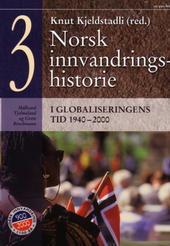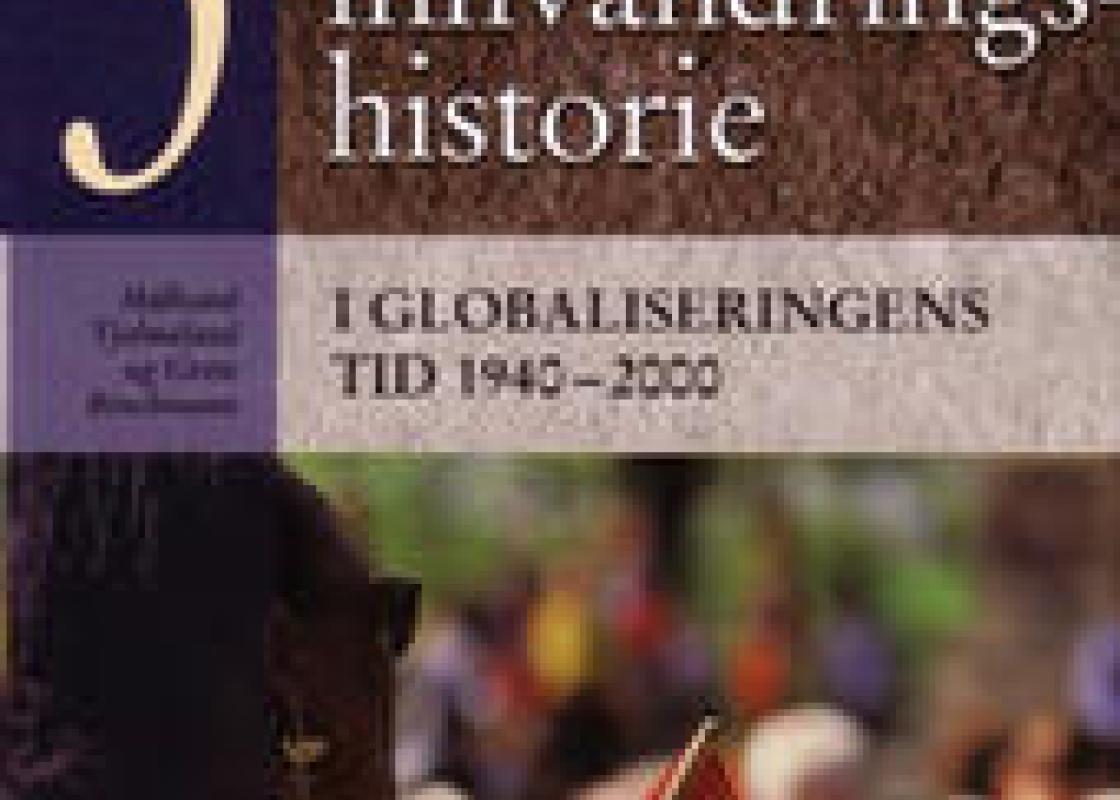
- We have been concious of the special challenge in making visible women’s participation and the role of women in history, says professor Knut Kjeldstadli, editor of Norwegian Immigration History. This was one of the clear intentions of the project, but it is not always easy to tell the story of women’s lives and experiences, since they have left less traces than men have. Lack of documentation sets limitations for what we as historians can come up with.
- I would have paid a lot to find the story of one of the Irish slave women or foreign queens, he adds, regretting that so far he does not know of any such stories.
The seven authors have had many assistants during the five year project period. No less than 30 master students have contributed to the project with their theses. In the presentation of the history volumes, the great value of this help was emphasized.
Earlier this fall the research project Power and Democracy gave its final conclusions. Two female professors each wrote separate remarks, because they did not agree with the views of society and the world as held by the male majority in the research group. How does your authors imprint the Immigration History?
-Two of the seven authors are women. There probably should have been a more balanced share of men and women – or maybe even a majority of women, admits Kjeldstadli. We have followed the recent debate in the Power and Democracy research project. But historians have discussed the gender perspective on history for the last two or three decades. I will therefore claim that we have tried to tell the story also of women’s lives and experiences for all the periods we cover. How well we have succeeded the readers must decide, but honest attempts have been made.
-Work migration, especially in earliest times, is a theme where the women’s perspective is not easily included. For instance the Hansa trade was dominated by unmarried men who came to Bergen to buy fish. They were not allowed to take citizenship nor to marry native women. One of the consequences was prostitution.
Other fates of women, both in the Viking Era and in the Middle Ages, were those of the queens who often were immigrants. - Their fathers built alliances and the daughters became the prize brides, exposed to the fate of forced marriages, Kjelstadli tells.
Otherwise the history of women appears, directly or indirectly, in the stories of wives of army officers and public servants. Women also lived as nuns in the monasteries and in the 18th century maids came to Norway from Sweden. Later, during modernization of the rural areas, women who worked in the milk shops surface with their stories. And even later, the girls in the coastal fishing factories. Today women are family refugees together with their husbands, and some of today’s immigrants are trophy brides from Asian countries. - The women’s stories are different than men’s stories, admits Kjeldstadli.
Conflicts of interest
One common denominator is found throughout the Norwegian Immigration History. Historically, Norwegians do not appear to have been hostile towards immigrants as such, but conflicts often arise for political or economic reasons. But things change towards the end of the 19th century. Then racial laws and laws funded on ethnic discrimination were passed.
-What were people afraid of? Kjeldstadli explains that towards the end of the 19th century the society was changing fast, as it is today. The peasant society changed fundamentally. Industrialization developed fast and the cities expanded. Consequently, the immigrants or minority groups were made into the scapegoats of modernization.
-If we can learn anything from history, it must be that fear can be handled. And the worst fears never happened, states the author cum professor.
Showing that immigration to Norway has a long history is an important reminder in present political debate about immigration. Immigration is not something that started with Pakistanis yesterday, or refugees from the Balkans and the Middle East today.
To migrate is to change – and it is a more common part of human existence than we tend to admit today. Especially when we think about the fact that in the world today there are 190 national states, inhabited by more than 5.000 different ethnic groups.
Norwegian Immigration History 1-3, Pax Publishing House, 2003
The books are available in Norwegian only. For authors and titles, see tentative translation below.
Volume 1: The Era of Kings; 900-1814, by Erik Opsahl, associate professor of history, University College of Vestfold and Sølvi Sogner, professor emeritus of history, University of Oslo
Volume 2: The Era of the National State, 1814-1940 by history professors Einar Niemi, University of Tromsø, Jan Eivind Myhre and Knut Kjeldstadli, University of Oslo
Volume 3: The Era of Globalization, 1940-2000 by
Hallvard Tjelmeland, professor of history, University of Tromsø, and
Grete Brochmann, head of research at the Institute of Social Science, Oslo, and professor II at the Institute of Sociology and Geography, University of Oslo
